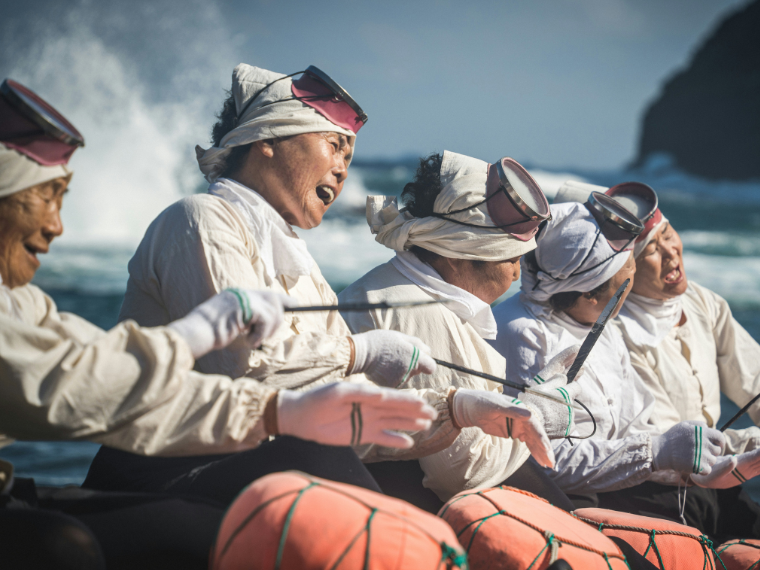The Jeju Haenyeo, known as the “sea women” of Jeju Island, are famous for their special way of harvesting from the ocean. Think of it like a family recipe passed down through many generations; these women dive deep into the sea without any breathing equipment to collect seafood. It’s not just about skill, but also about a rich culture and strong community bonds, like a tight-knit sports team. Understanding their history is key because it shows us how strong, eco-friendly, and empowering women can be, even when the world around them is changing fast.
This article will explore the world of the haenyeo. We’ll look at their history, the old-school techniques they use, the problems they face today, and how their work still matters. It’s like uncovering a hidden treasure map to see how this unique culture has grown, how it helps the local economy, and why it’s famous worldwide.
The Beginning of Jeju Haenyeo
The haenyeo tradition started way back in the 1600s during the Joseon Dynasty. Imagine women diving to gather shellfish and sea urchins, almost like adding extra ingredients to a family meal, to help support their families. Historical records show that the haenyeo were super important to the local economy.
These women often took on this tough job and went through intense training. They learned to hold their breath for a long time, like holding a note in a song, and developed ways to gather as much as they could. Historian Lee Jae-soon mentions,
“the haenyeo’s skills are passed down through generations, signifying their vital place in Jeju’s identity.”
This cultural tradition shows how tough they are and how much they care about keeping the ocean healthy.
Haenyeo Methods and Gear
The haenyeo have special diving styles, like the “Bonggeum” style, which lets them dive deep and stay underwater for longer without any fancy equipment. It’s like being a fish in the water, but without gills. They use traditional tools, such as the “sujeonghwa” (a kind of net) and the “sangseon” (a tool to gather their catch without harming the underwater world). It is like they have the perfect fishing instruments, designed to be gentle on the ocean.
Working together is a big part of their process. The haenyeo usually dive in teams, building a strong sense of friendship and support. The Jeju Haenyeo Cultural Heritage Center’s report notes,
“collective underwater harvesting has created a strong social fabric among the sea women, ensuring mutual respect and collaboration.”
This teamwork shows the eco-friendly wisdom that has been passed down for years.
Challenges for Today’s Haenyeo
Even with their amazing history, haenyeo face big problems today. Imagine trying to keep a tradition alive when everything around you is changing. Things like environmental changes, city growth, and less interest in old-fashioned jobs are putting their way of life at risk. Warmer ocean temperatures are hurting sea life, making it harder for the haenyeo to find enough to gather.
Also, fewer young people are interested in this tough job. A recent study shows that the number of active haenyeo has gone down a lot in the past few decades. One haenyeo said,
“While the work is arduous, it is also empowering, and we hope that our daughters will continue this legacy.”
This shows how important it is to bring back interest in haenyeo traditions while dealing with modern challenges.
Saving the Culture and Getting Recognized
Recognizing how important the haenyeo are, UNESCO named them an Intangible Cultural Heritage of Humanity in 2016. This recognition is like giving them a gold medal for their culture. It has led to efforts to protect their ways and teach people about their cultural history.
Many groups are working to share the haenyeo’s stories through displays, workshops, and learning programs, so their knowledge and success are on display. These projects aim to keep their skills and traditions safe, and also to lift up these amazing women by showing how much they’ve contributed to both local and worldwide cultures.
What’s Next for the Haenyeo Legacy
The future of the haenyeo is hopeful, but still uncertain. Community projects are super important for building respect for their culture and encouraging eco-friendly practices in ocean conservation. Engaging young people with programs that teach them valuable things can help keep this special diving tradition alive.
Also, connecting these women with tourism can offer them extra income while keeping their traditional ways alive. It is similar to having several streams to supply a garden. As one elder haenyeo said,
“Each dive holds our history and our hopes, and it is our duty to share this with the world.”
If managed well, the haenyeo tradition can do great in a modern world while still adding to the rich culture of Jeju Island.
Conclusion: Celebrating a Cultural Treasure
The Jeju haenyeo are a symbol of women’s strength and caretakers of the ocean. Their ways highlight community, sustainability, and taking care to keep our way of life. As challenges come up, supporting their legacy is key to making sure this unique cultural practice survives.
In the end, the haenyeo’s toughness teaches us important lessons about keeping the environment balanced and treating everyone equally. This heritage is similar to a blueprint for a sustainable living. By celebrating their heritage and standing up for their future, we recognize the amazing contributions of these sea women, making sure their legacy lasts for many years to come.
